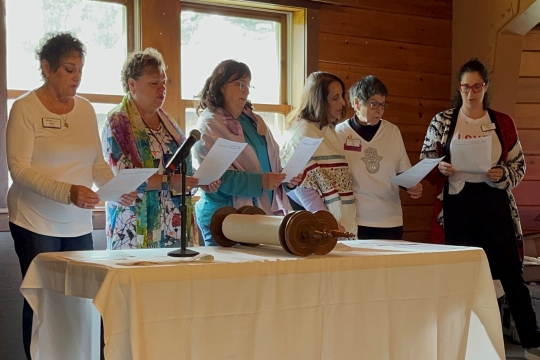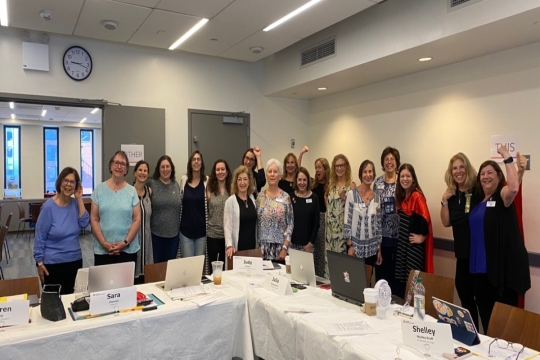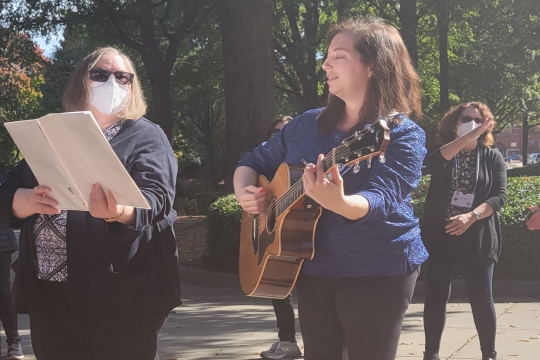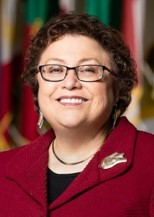Having grown up in Atlanta, I found that Shabbat services in Fort Smith, AR, in the early 2000s were a completely different experience than anything I’d previously known. United Hebrew Congregation (UHC), once home to more than 100 families when my husband was growing up there, had dwindled to a small fraction of that. Services were held in the library/study because the group would have been lost in the sanctuary. Barely a minyan attended; services were led by one of the congregants and music was provided using recordings on a boom box. But the joy of Shabbat and spirit of community were strong, with the Oneg Shabbat doubling as a pot luck dinner and providing an opportunity for everyone to catch up and share the latest in their lives. There was no longer an active sisterhood, although it was remembered fondly as having been a vital arm of the congregation… and my mother-in-law, Isabel Marks, z”l, continued to use the WRJ Art Calendar as her primary means of organization and connection to WRJ long after the sisterhood had disbanded. Dr. S.Z. Kahana1 shares a story in which a team of archaeologists travel to the near east in search of the remains of Noah’s ark. Unsuccessful, they go on to Jerusalem looking for additional clues. The curator of Mount Zion tells them he will take them on a three day journey and “show them the ark of Noah.” He first takes them to northern Israel’s Galil, where they observe immigrants from Eastern Europe building houses. The next day he takes them south into the Negev, where hundreds of recently arrived immigrants from Morocco build a new settlement in a day. On the third day, he returns them to Jerusalem where they see similar construction underway. The curator explains that Israel is the new ark, likening the obliteration of the immigrants’ lives in their home countries to the destructive power of the flood, and noting that in building a new society they may be “constructing the new ark that will salvage humanity.” At Albany, GA’s Temple B’nai Israel, another small southern congregation, they clearly understand the relationship of the community to the ark – in fact their unique building, nestled in the woods, houses a sanctuary that dramatically echoes the shape of the ark. Beit tefillah, beit midrash, beit knesset – their ark is their house of prayer, study and meeting. On many family visits there, I have been welcomed into a caring, supportive community that maintains a proud sense of their roots (dating to 1876) while exploring and adapting throughout their history. UHC in Fort Smith has actually grown a bit in the past few years; the last time we were there we celebrated Shabbat in the sanctuary (and still enjoyed the wonderful community pot luck Oneg!). B’nai Israel’s sisterhood is proudly featuring their congregation’s next generation on its Facebook page. As you read Parashat Noach… and the next time you see a rainbow… consider that our communities, congregations, and sisterhoods provide the ark of our times, the figurative sanctuary that preserves our history and beliefs while providing a nurturing home that allows us to adapt and change for the future. Note: Blair’s husband Joe hails from Fort Smith, AR, and her aunt and uncle belong to Congregation B’nai Israel in Albany, GA. 1Kahana, Dr. S.Z., Heaven on Your Head, edited by Rabbi Morris Silverman, (Hartford: Hartmore House, 1964) pp 16-17.
Related Posts

Parashat Yom Rishon shel Rosh HaShanah

Cultivating a Culture of Accountability and Belonging


